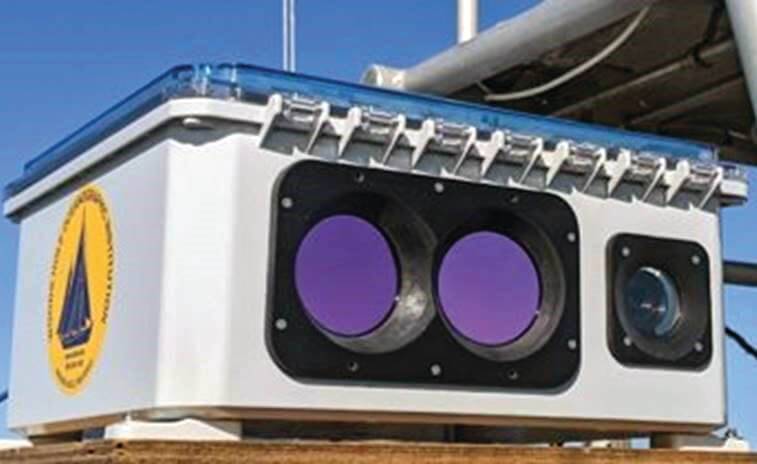Matson Helping to Develop Whale Detection Technology for Ships
U.S. ocean carrier Matson is doing its part to limit whale strikes, including rerouting vessels to avoid protected areas and helping to develop cutting-edge technology that detects whales and alerts crew members of their presence.
In August of last year, Matson made route adjustments to its weekly triangulating Oakland-Long Beach-Honolulu voyage to minimize the time our vessels spend inside whale protection zones of the northern and southern California coasts. Fleet Operations led the development process for creating these new routes with the goal of reducing the risk of whale collisions in areas that are known whale migration routes, feeding grounds, and breeding areas. Since the new routes were implemented, Matson’s compliance with voluntary speed reduction guidelines in the protection zones has improved. Through May, Matson has earned an aggregate “B” grade for 2024 from Whale Safe, a vessel monitoring service.
In addition, Matson has partnered with Woods Hole Oceanographic Institution (WHOI) to develop and test whale detection technology for ships that can further reduce the risk of collisions.
Last summer, Matson committed $1 million to support WHOI research and development of Whale Detection Cameras (WDC), which use thermal imaging to detect whale spouts and provide real-time information on their distance and bearing from the vessel. This information is validated through a cloud-based platform using artificial intelligence to constantly authenticate the data, reducing the chance of a false alert. As part of the partnership, Matson offered the use of its vessels as test beds for gathering real-world use data WHOI needs for their research and continued development of the technology.
 WHOI Whale Detection Camera (Photo: Matson)
WHOI Whale Detection Camera (Photo: Matson)
Vessel Operations & Engineering selected three vessels to participate in the research: Manulani, Manoa, and Daniel K. Inouye. Manulani will be the first to receive a camera, with the installation expected this month.
WHOI associate scientist Dan Zitterbart said, “Our concept is very simple. We have a thermal imaging scanner that scans the surface for whale exhalations or spouts. If a whale surfaces and blows, its thermal signature can be recorded by the camera.”
Once installed, the cameras will be able to alert vessel crews to the presence of whales several kilometers away within seconds. This provides time for most vessels to change course, enhancing the safety of our operations. And thanks to their use of thermal infrared technology, these cameras can spot whales day or night, further improving our ability to avoid collisions.
Captain Travis Seely, Master Manulani, welcomes the addition to his vessel. “I’m very excited about being part of the pilot program for this new technology.”
Captain Seely, who has been sailing for Matson since 2017 and Master aboard the Manulani since 2023, added, “There have been several occasions where we’ve had to maneuver to avoid whale collisions off the California coast. I hope the installation of this specially designed camera truly makes a positive difference in how the maritime industry impacts the marine environment.”














